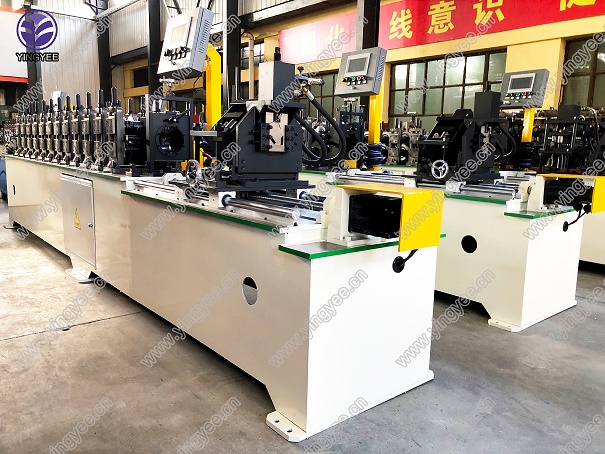
The Three Rollers Thread Rolling Machine Innovations in Precision Manufacturing
In the industrial landscape, the demand for precision-engineered components has soared, particularly in sectors such as automotive, aerospace, and construction. One of the vital technologies that have emerged to meet this demand is the three rollers thread rolling machine. This equipment revolutionizes the way threads are formed on metal components, providing enhanced strength, accuracy, and efficiency compared to traditional methods.
Understanding Thread Rolling
Thread rolling is a cold-forming process that creates external threads on metal bars or rods. Unlike traditional cutting methods, which remove material to form threads, thread rolling displaces material, resulting in a denser and stronger product. This is particularly beneficial for applications requiring high tensile strength and fatigue resistance. The three rollers thread rolling machine utilizes three cylindrical rollers to shape the material into precise threads without significant alterations to its original properties.
Mechanical Design and Function
The design of a three rollers thread rolling machine is sophisticated yet user-friendly. Typically, it comprises three main rollers arranged to grip the workpiece tightly. The center roller is fixed, while the outer two rollers rotate and apply pressure to the material being processed. This unique arrangement allows for smoother operation and reduced friction, which is crucial for managing heat generation and ensuring the longevity of the machine.
As the workpiece moves through the rollers, the material is deformed into the desired thread shape. This process is highly efficient, enabling manufacturers to produce large quantities of threaded components in a short amount of time. Moreover, the machine is versatile, accommodating various materials including steel, aluminum, and other alloys, making it an essential tool across multiple industries.
Advantages of Three Rollers Thread Rolling Machines

One of the most significant advantages of using a three rollers thread rolling machine is the improved mechanical properties of the threaded parts. The cold-working process enhances the material's strength by aligning its internal grain structure. This results in a product that is not only stronger but also more resistant to wear and tear. Additionally, the accuracy of thread dimensions is much higher compared to cutting methods, which can lead to significant cost savings in terms of rejects and rework.
Another notable benefit is the reduction in waste. Traditional machining processes often leave a considerable amount of scrap material, whereas thread rolling minimizes waste by utilizing the existing material effectively. This makes it not only a cost-effective solution but also an environmentally friendly option.
Applications in Various Industries
The three rollers thread rolling machine finds applications across a wide array of industries. In the automotive sector, it is used to manufacture bolts, nuts, and other fastening components that require high precision and strength. The aerospace industry also benefits from this technology, as it can produce lightweight yet durable components essential for aircraft safety and efficiency.
Moreover, in construction, the ability to create strong, reliable threaded rods and anchors is crucial, and the three rollers thread rolling machine meets this requirement effortlessly. The energy sector, particularly in the development of wind turbines and other renewable energy applications, also relies on the consistent quality of components produced through this advanced technology.
Conclusion
The three rollers thread rolling machine represents a significant advancement in precision manufacturing. By enhancing material strength, reducing waste, and providing high levels of accuracy, it serves as an indispensable tool in various industries. As manufacturing continues to evolve, the adoption of such innovative technologies will play a crucial role in meeting the ever-increasing demands for quality and efficiency in production processes. With ongoing developments in machine design and CNC technology integration, we can anticipate even greater capabilities from thread rolling machines in the future, thus ensuring they remain at the forefront of modern manufacturing solutions.